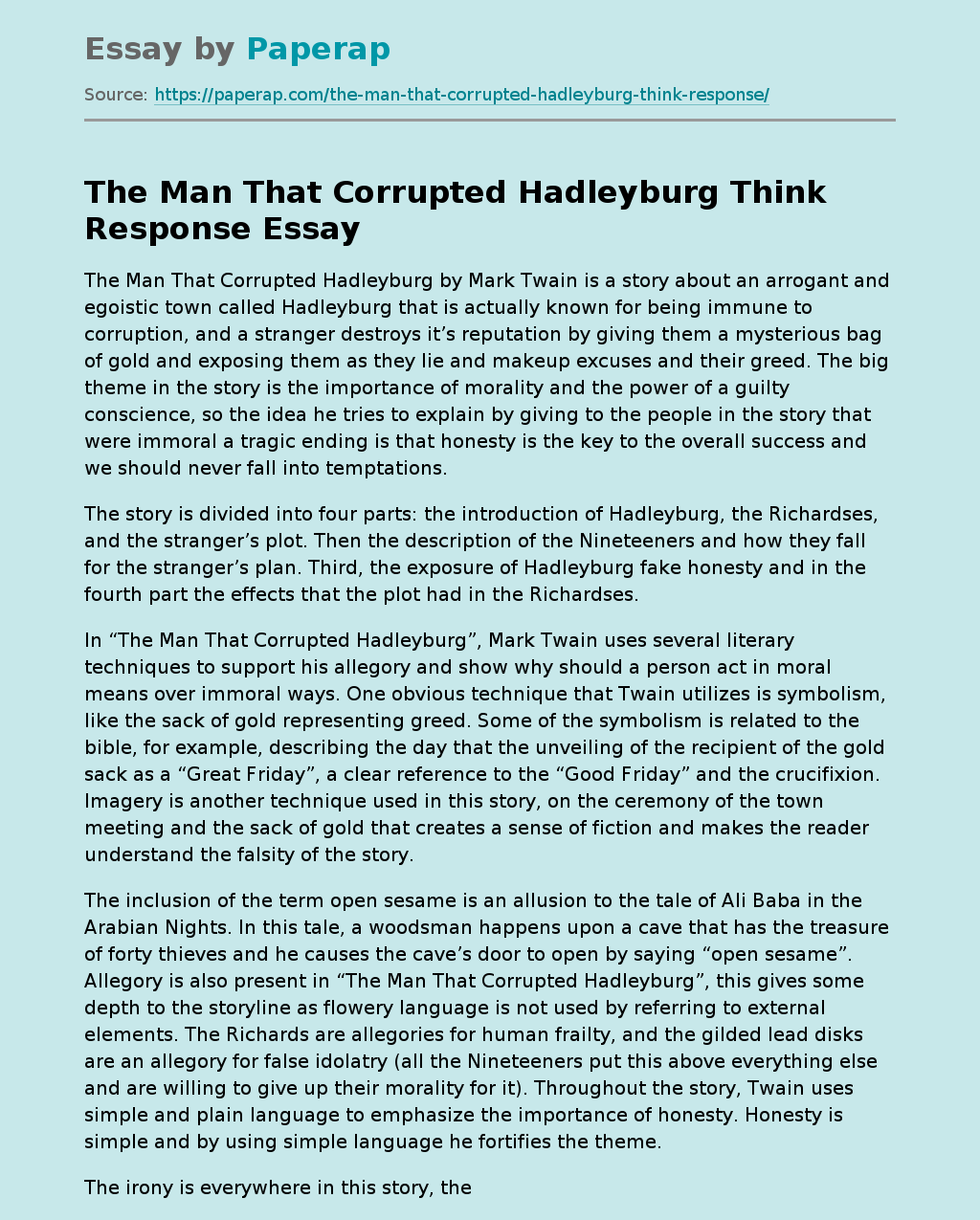The Man That Corrupted Hadleyburg Think Response
The Man That Corrupted Hadleyburg by Mark Twain is a story about an arrogant and egoistic town called Hadleyburg that is actually known for being immune to corruption, and a stranger destroys it’s reputation by giving them a mysterious bag of gold and exposing them as they lie and makeup excuses and their greed. The big theme in the story is the importance of morality and the power of a guilty conscience, so the idea he tries to explain by giving to the people in the story that were immoral a tragic ending is that honesty is the key to the overall success and we should never fall into temptations.
The story is divided into four parts: the introduction of Hadleyburg, the Richardses, and the stranger’s plot. Then the description of the Nineteeners and how they fall for the stranger’s plan. Third, the exposure of Hadleyburg fake honesty and in the fourth part the effects that the plot had in the Richardses.
In “The Man That Corrupted Hadleyburg”, Mark Twain uses several literary techniques to support his allegory and show why should a person act in moral means over immoral ways. One obvious technique that Twain utilizes is symbolism, like the sack of gold representing greed. Some of the symbolism is related to the bible, for example, describing the day that the unveiling of the recipient of the gold sack as a “Great Friday”, a clear reference to the “Good Friday” and the crucifixion. Imagery is another technique used in this story, on the ceremony of the town meeting and the sack of gold that creates a sense of fiction and makes the reader understand the falsity of the story.
The inclusion of the term open sesame is an allusion to the tale of Ali Baba in the Arabian Nights. In this tale, a woodsman happens upon a cave that has the treasure of forty thieves and he causes the cave’s door to open by saying “open sesame”. Allegory is also present in “The Man That Corrupted Hadleyburg”, this gives some depth to the storyline as flowery language is not used by referring to external elements. The Richards are allegories for human frailty, and the gilded lead disks are an allegory for false idolatry (all the Nineteeners put this above everything else and are willing to give up their morality for it). Throughout the story, Twain uses simple and plain language to emphasize the importance of honesty. Honesty is simple and by using simple language he fortifies the theme.
The irony is everywhere in this story, the town is known for it’s honesty, however, all of the Nineteeners try to get the money. Another example of irony is that the Stranger tries to expose the town for lying, but he achieves that by lying. Even though this immorality has happened in Hadleyburg in this story, people all over America can be like that too, so this town could even represent the whole United States To sum up, “The Man That Corrupted Hadleyburg” touches a lot of themes and Mark Twain utilizes literary techniques to enforce those topics. The story leaves an important message that can help people maintain out of trouble and close to Christian values
The Man That Corrupted Hadleyburg Think Response. (2021, Dec 13). Retrieved from https://paperap.com/the-man-that-corrupted-hadleyburg-think-response/

